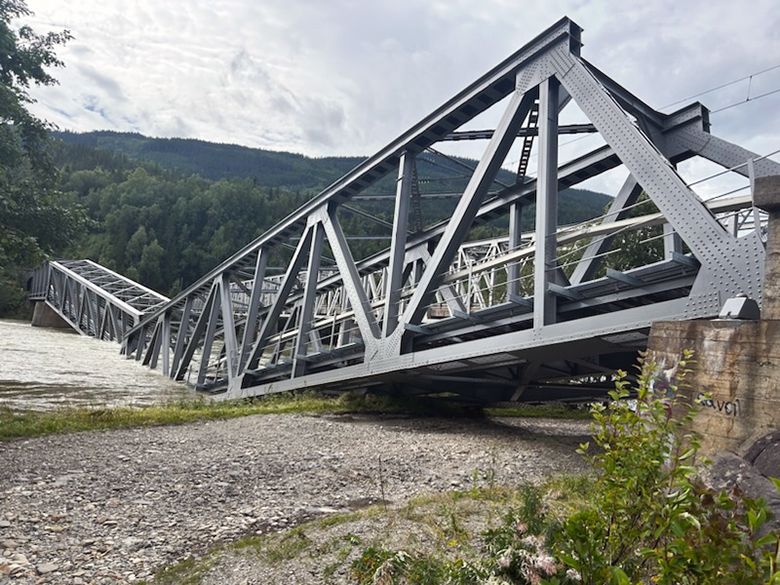An emergency brake for the climate
To limit global heating to 1.5 degrees, the EU’s Climate Advisors recommend that Europe cuts 90-95% of carbon emissions by 2040 compared to 1990. Fossil fuels should be phased out as quickly as possible.

Originally published in forskning.no. Translated from Norwegian.
The climate crisis is here. We are experiencing possibly the warmest year in human history. Record-warm oceans are contributing to historic floods in China, Greece, Slovenia, and Norway. Forest fires ruined Northern Europeans’ summer holiday and devastated Hawaii’s Mau Island. Hikers in Texas and chicken in England die of heat stress.
There is broad political support for the 1.5°C target in the Paris Agreement, in Norway as in Europe. Politicians promised voters to take strong action to reduce emissions. Emissions of 350 billion tonnes suffices to raise the concentration of carbon dioxide in the atmosphere to the level where there is a 50% probability that the average temperature will reach or surpass the threshold of 1.5 degrees Celsius above the pre-industrial average. Last year, carbon emissions from energy and cement production alone reached a record 37 billion tonnes, according to Global Carbon Project. Without abruptly slowing down, we pass the 1.5 degrees emissions budget by around 2030, and summer this year gives us a taste of what an average year will look like then.
The European Union has through the presidency of Ursula van der Leyen done a lot for climate protection. The EU’s and Norway’s target for 2030 is to reduce emissions by 55% from 1990 levels. The EU had achieved a reduction of 32% by 2021, Norway by just 4%. The EU Climate Law of 2021 requires the Union to set an emission target for 2040 and prepare a budget of accumulated emissions for the period 2030-2050. This is the objective by which future policies in industry, energy, transport, and agriculture will be governed. Norway is obliged to follow EU rules in several of these policy areas and has in the past also chosen to set the same emission targets.
The EU climate advisory board, anchored in the Climate Law, has now submitted proposals for both a target for 2040 and an emissions budget for 2030-2050. In our work on the 2040 target, we have considered how the global emission budget of 350 billion tonnes can be fairly distributed among the world's eight billion inhabitants, and the feasibility of emission cuts.


The UN Framework Agreement on Climate Change from 1992 already laid down guidelines for equitable distribution of emission cuts. Everyone has a responsibility to reduce emissions, but it is necessary to differentiate both according to who causes how much emissions and the ability to implement reductions. Philosophers and researchers have worked out different distribution principles and investigated what this means for the distribution of the global emission budget. All principles based on historical emissions show that rich countries and China have used up their share of the emission budget, and then some. Only if we disregard who was responsible for past greenhouse gas emissions are European countries still allowed to emit more. In other words, the EU and Norway must reduce their emissions to zero as quickly as possible and prepare for carbon removal afterwards. At the same time, no one can be obliged to achieve the impossible.
The global energy and climate models used by the Intergovernmental Panel on Climate Change (IPCC) have long struggled to find measures that reduce emissions fast enough to limit warming to 1.5 degrees. But no one predicted that solar and wind energy would become so cheap, that electric cars could compete with fossil-powered vehicles so quickly, and that developing countries could increase their welfare with so relatively less energy use than rich countries did. The advisory board has examined two thousand different emission scenarios from many models. Three scenarios were selected as examples. These scenarios now serve as our basis for analyzing the necessary emissions reductions in different sectors of the economy.
The scenario analysis shows that there are different ways of reaching the 1.5°C target. Scenarios that achieve the 1.5°C target involve a radical phasing out of fossil energy sources and a rapid expansion of solar and wind energy. All scenarios involve reduced consumption of meat and transport services, accelerated development of renewable power, use of nuclear power, carbon capture and storage, and hydrogen, but in different composition and scope.
In the scenarios that achieve the 1.5°C target, emissions in 2040 are only 5-10% of emissions in 1990. The EU's accumulated greenhouse gas emissions between 2030 and 2050 are 11-14 billion tonnes. This is not more than four years’ worth of the current annual emissions of 3.5 billion tonnes per year. After 2050, the EU will have to remove some carbon dioxide from the atmosphere to remedy old sins.
The advisory board recognises that a reduction of 90-95% by 2040 compared with 1990 is a tough climate target. If we reduce less, then we rush past 1.5 degrees of warming. It will be difficult to stop emissions later, while at the same time we are battling the consequences of the climate crisis, such as refugee flows, floods, and heat waves. We must stop emissions! The EU is on the right track, and the goals proposed by the Council are achievable, but require a faster pace of change. Norway is a good illustration that not all countries are as well positioned as the EU. Stronger action is needed there.
Reference:
European Scientific Advisory Board on Climate Change, 2023, Scientific advice for the determination of an EU-wide 2040 climate target and a greenhouse gas budget for 2030–2050. Copenhagen.

